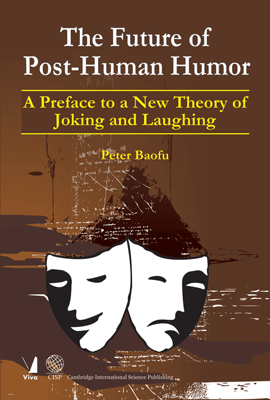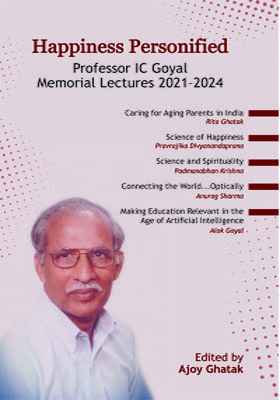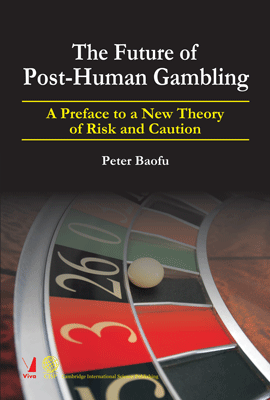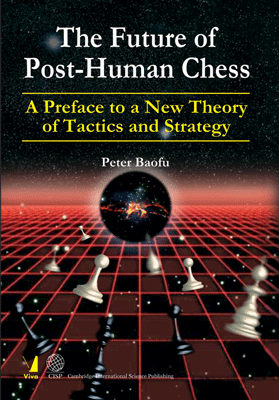
The Future of Post-Human Humor
The Future of Post-Human Humor
A Preface to a New Theory of Joking and Laughing
₹1,255.50 ₹1,395.00 Save: ₹139.50 (10%)
Go to cartISBN: 9788130919980
Bind: Hardbound
Year: 2012
Pages: 462
Size: 153 x 229 mm
Publisher: Cambridge International Science Publishing
Published in India by: Viva Books
Exclusive Distributors: Viva Books
Sales Territory: India, Nepal, Pakistan, Bangladesh, Sri Lanka
Description:
Is humor really so desirable that, as Aristotle once wrote in a funny passage, "[t]he gods too are fond of a joke"• (QW 2010a)
This positive idea of humor can be contrasted with other (opposing) views. For instance, as Sigmund Freud once wrote, "[o]ne can•t express aggression and sexual drive directly, as it is prohibited in the society, so these desires get sublimated in telling •jokes.• If you look at jokes, they are either about somebody getting hurt, or they have sexual connotations." (A. Chislenko 2010) But E.B. White was more skeptical when he once argued that "humor can be dissected as a frog can, but the thing dies in the process and the innards are discouraging to any but the pure scientific mind." (WK 2010)
Contrary to these opposing views (and other ones as will be discussed in the book), humor is neither possible nor desirable to the extent that the respective ideologues (on the opposing sides of the fence) would like us to believe. Of course, one should not misconstrue this critique of the conventional wisdom about the nature of humor as a suggestion that humor is a joyless endeavor, or that some fields of study (related to humor) like philosophy, psychology, sociology, or even culture studies are to be disregarded. Needless to say, neither of these extreme views is reasonable either.
On the contrary, this book provides an alternative (better) way to understand the future of humor, especially in the dialectic context of joking and laughing—while learning from different approaches in the literature but without favoring any one of them (nor integrating them, since they are not necessarily compatible with each other). Thus, this book offers a new theory (that is, the metamorphic theory of humor) to go beyond the existing approaches in the literature on humor in a novel way.
If successful, this seminal project is to fundamentally change the way that we think about humor, from the combined perspectives of the mind, nature, society, and culture, with enormous implications for the human future and what the author originally called its "post-human" fate.
In this book:
• Introduction—The Fun of Humor
• Joking and Its Double Faces
• Laughing and Its Dual Facets
• Conclusion—The Future of Humor
Contents:
List of Tables • Foreword • Acknowledgments • List of Abbreviations
Part One: Introduction • Chapter One. Introduction—The Fun of Humor • Humor to Be, or Not to Be, a Frog Can •Humor in Relation to Joking and Laughing • The Theoretical Debate • The Metamorphic Theory of Humor • Theory and Meta-Theory • The Logic of Existential Dialectics • Sophisticated Methodological Holism • Chapter Outline • Some Clarifications
Part Two: Joking • Chapter Two. Joking and Its Double Faces • The Benignity of Joking • Joking and the Mind • Joking and Nature • Joking and Society • Joking and Culture • The Malignity of Joking • The Future of Post-Human Humor
Part Three: Laughing • Chapter Three. Laughing and Its Dual Facets • The Joy of Laughing • Laughing and the Mind • Laughing and Nature • Laughing and Society • Laughing and Culture • The Sorrow of Laughing
Part Four: Conclusion • Chapter Four. Conclusion—The Future of Humor • Beyond Joking and Laughing • 1st Thesis: The Absoluteness-Relativeness Principle • 2nd Thesis: The Predictability-Unpredictability Principle • 3rd Thesis: The Explicability-Inexplicability Principle • 4th Thesis: The Preciseness-Vagueness Principle • 5th Thesis: The Simpleness - Complicatedness Principle • 6th Thesis: The Openness-Hiddenness Principle • 7th Thesis: The Denseness-Emptiness Principle • 8th Thesis: The Slowness-Quickness Principle • 9th Thesis: The Expansion-Contraction Principle • 10th Thesis: The Theory-Praxis Principle • 11th Thesis: The Convention-Novelty Principle • 12th Thesis: The Evolution-Transformation Principle • 13th Thesis: The Symmetry-Asymmetry Principle • 14th Thesis: The Sofness-Hardness Principle • 15th Thesis: The Seriousness-Playfulness Principle • 16th Thesis: The Regression-Progression Principle • 17th Thesis: The Sameness-Difference Principle • 18th Thesis: The Post-Human Rendition • Towards the Post-Human Rendition
Bibliography • Index
About the Author:
Dr Peter Baofu is the author of 53 new theories in 44 books to provide a visionary challenge to conventional wisdom in all fields of knowledge ranging from the social sciences through the formal sciences and the natural sciences to the humanities, with the final aim for a unified theory of everything.
He is known for his pioneering works on "multilateral acoustics," "metamorphic humor," "heterodox education," "post-human mind games," "post-Earth geology," "substitutive religion," "post-cosmology," "contrarian personality," "post-ethics," "multifaceted war and peace," "post-humanity," "critical-dialectic formal science," "combinational organization," "hyper-sexual body," "law reconstruction," "comprehensive creative thinking," "hyper-martial body," "multilogical learning," "contingent urban planning," "post-capitalism," "selective geometry," "post-democracy," "contrastive advantages," "ambivalent technology," "authoritarian liberal democracy," "the post-post-Cold-War era," "post-civilization," "transformative aesthetic experience," "synthetic information architecture," "contrastive mathematical logic," "dialectic complexity," "after-postmodernity," "sophisticated methodological holism," "post-human space-time," "existential dialectics," "unfolding unconsciousness," "floating consciousness," "hyper-spatial consciousness," and other visions.
Dr Baofu earned an entry to the list of "prominent and emerging writers" in Contemporary Authors (2005) and another honorary entry in The Writers Directory (2007) — and was also interviewed on television and in newspapers about his original ideas. He was a U.S. Fulbright Scholar in the Far East. He had taught as a professor at different universities in Western Europe, the Caucasus, the Middle East, the Balkans, Central Asia, South Asia, and North America. He finished more than 5 academic degrees, including a Ph.D. from the world-renowned M.I.T., and was a summa cum laude graduate.



